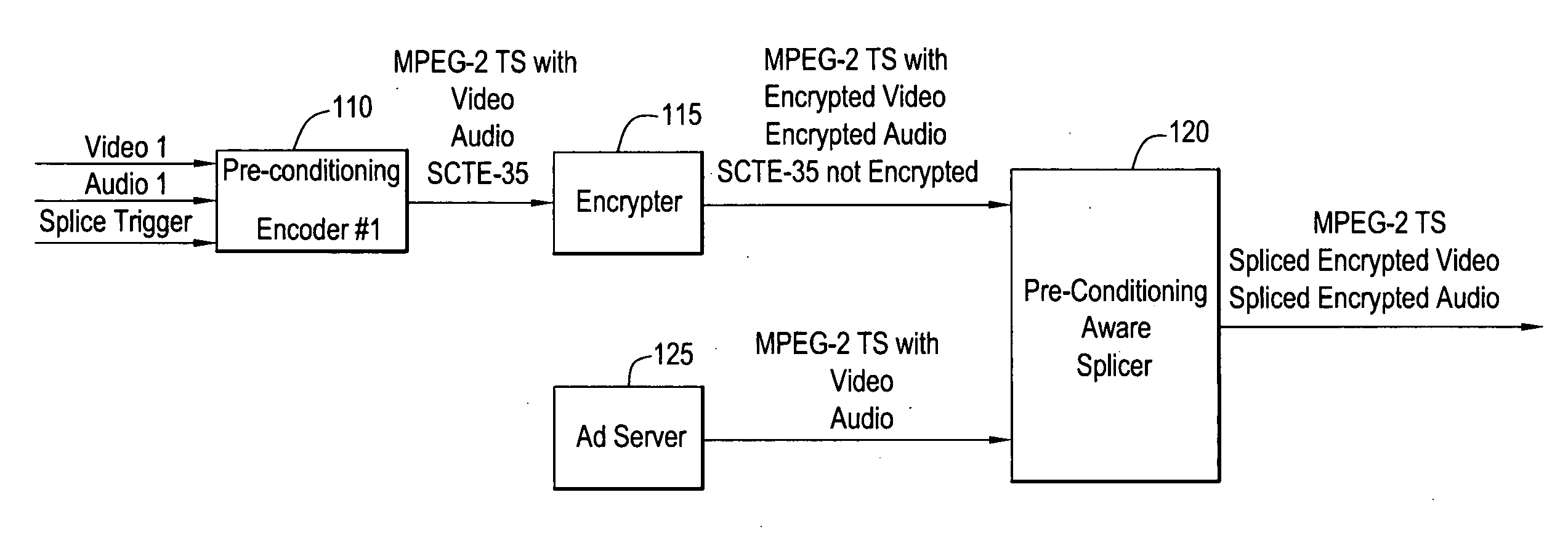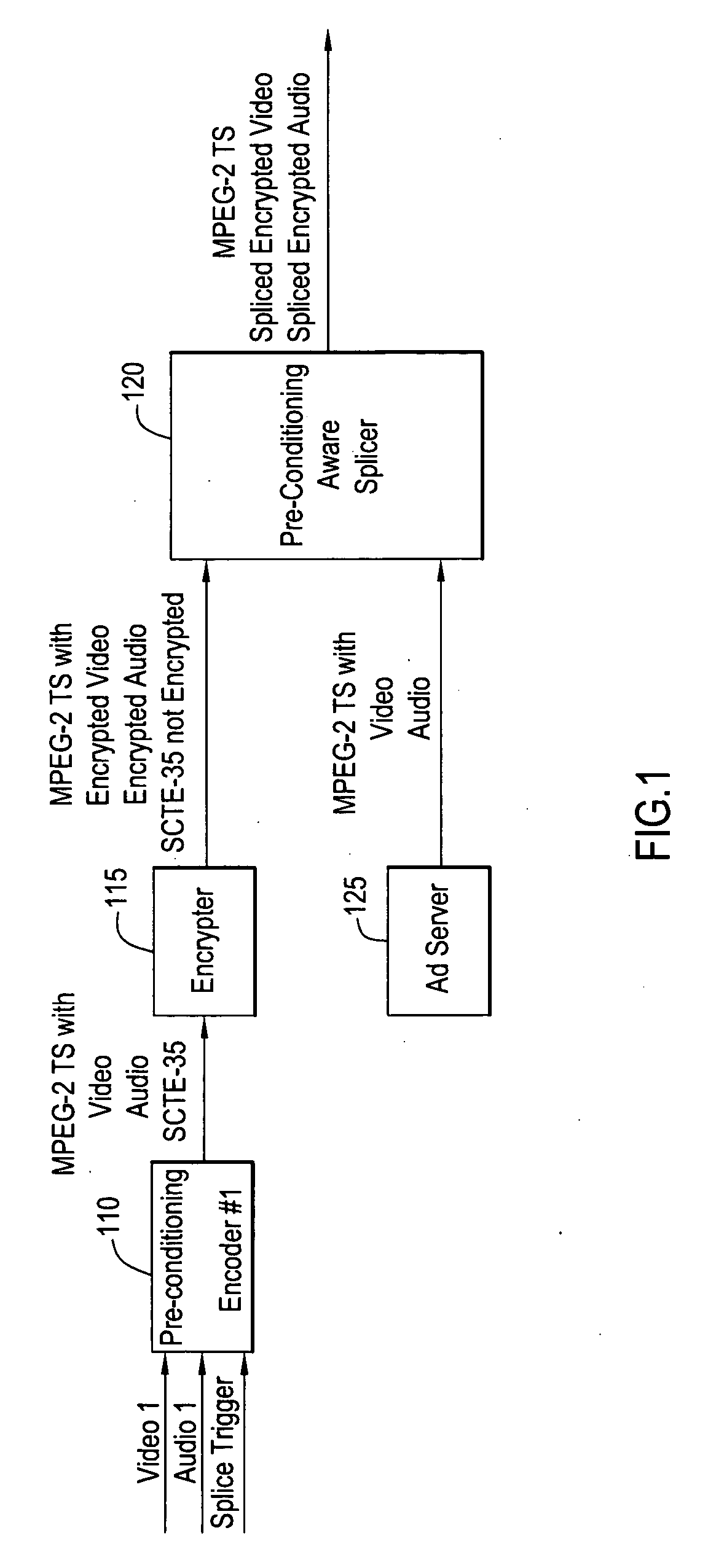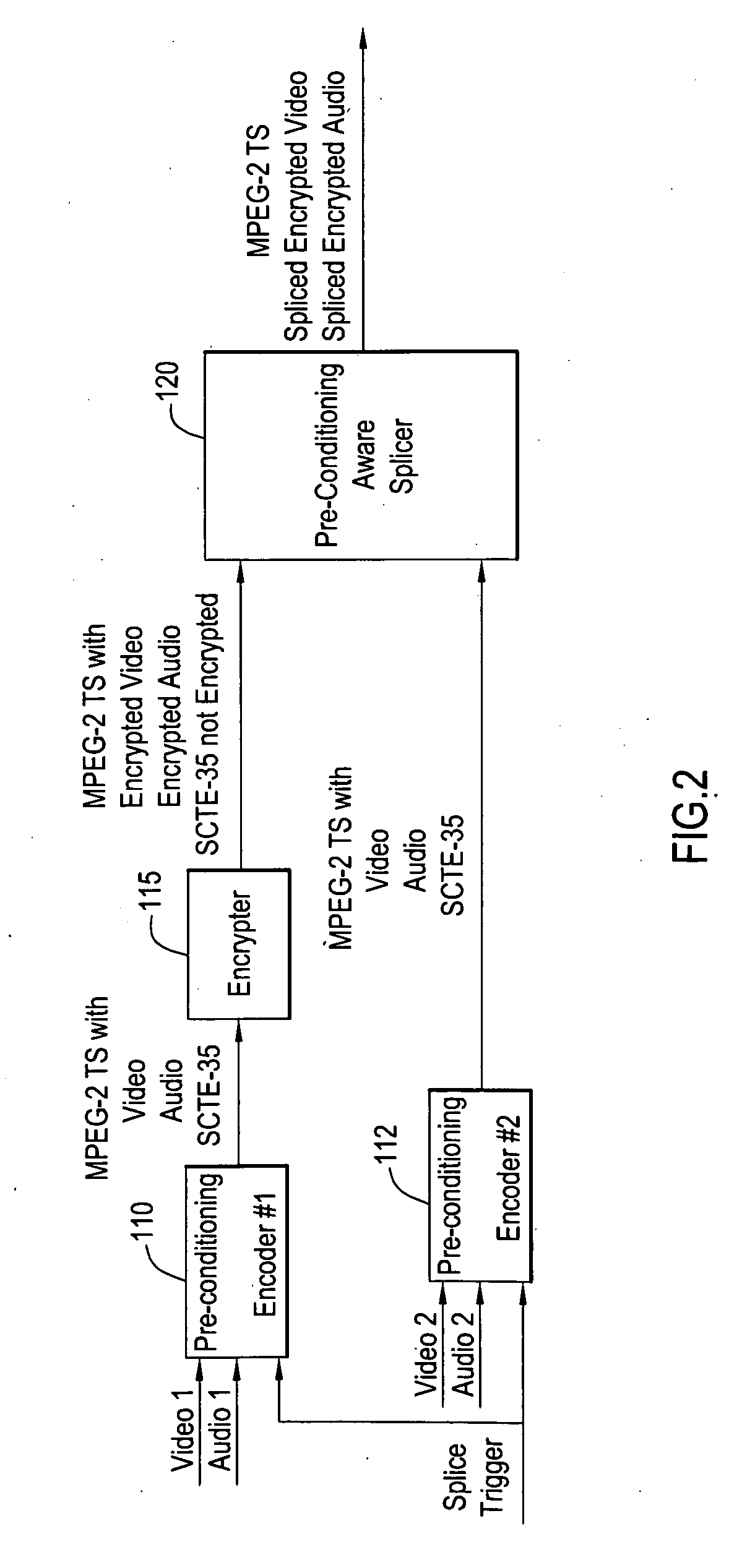Splicing of Encrypted Video/Audio Content
a technology of encrypted video and audio, applied in the field of systems and methods for splicing digitally encoded video and/or audio, can solve the problems of video and audio streams not being available in clear, video and audio streams not meeting the buffer model of the mpeg decoder, and noticeable lip sync problems
- Summary
- Abstract
- Description
- Claims
- Application Information
AI Technical Summary
Problems solved by technology
Method used
Image
Examples
example embodiments
Description of Example Embodiments
[0037]FIG. 1 shows a block diagram of one possible implementation of the present invention (ad insertion). A pre-conditioning encoder 110 receives video and audio signals, as well as a splice trigger that is indicative of a splice event that is to occur in the near future. The encoder 110 may encode the video and audio in accordance with a video / audio compression standard, such as MPEG-2 and output an MPEG-2 transport stream. The splice trigger is transformed into a well-known SCTE-35 cue message. The encoded elementary streams (ES) are passed to Encrypter 115, which encrypts the payloads of the individual packets that comprise the transport stream. The SCTE-35 cue messages are preferably not encrypted (if they are, sufficient information must be provided to allow the splicer to decrypt them). Note that the splice trigger could also be transported from the encoder to the splicer by a means other than SCTE-35.
[0038]The thus-encrypted transport stream...
example 1
RateAN, (DTS−STC)A=(DTS−STC)N (FIG. 18)
[0223]Since the DTS−STC distance of the ad is already identical to that of the network feed, there is no shift in decoder buffer delay for the ad. At the splice out point, the decoder buffer level drops to that of the original ad. At the network in point, the decoder buffer level rises back to that of the network feed.
example 2
RateA=RateN, (DTS−STC)A=(DTS−STC)N (FIG. 19)
[0224]Since the DTS−STC distance of the ad is already identical to that of the network feed, there is no shift in decoder buffer delay for the ad. Since the bit-rate of the ad is also identical to that of the network feed there is no drop in the decoder buffer level around the network out point and no rise around the network in point.
PUM
 Login to View More
Login to View More Abstract
Description
Claims
Application Information
 Login to View More
Login to View More - R&D
- Intellectual Property
- Life Sciences
- Materials
- Tech Scout
- Unparalleled Data Quality
- Higher Quality Content
- 60% Fewer Hallucinations
Browse by: Latest US Patents, China's latest patents, Technical Efficacy Thesaurus, Application Domain, Technology Topic, Popular Technical Reports.
© 2025 PatSnap. All rights reserved.Legal|Privacy policy|Modern Slavery Act Transparency Statement|Sitemap|About US| Contact US: help@patsnap.com



